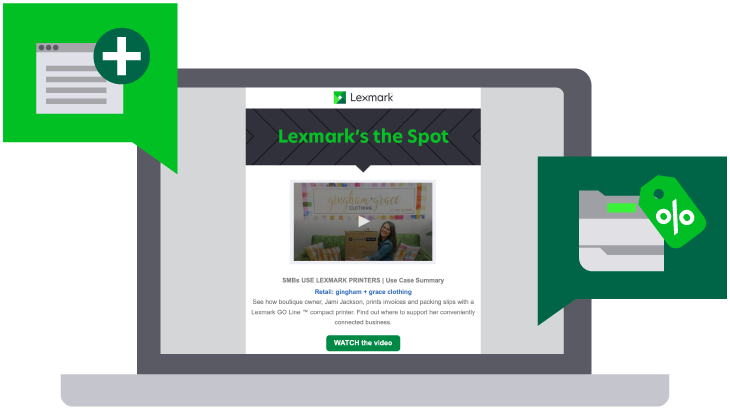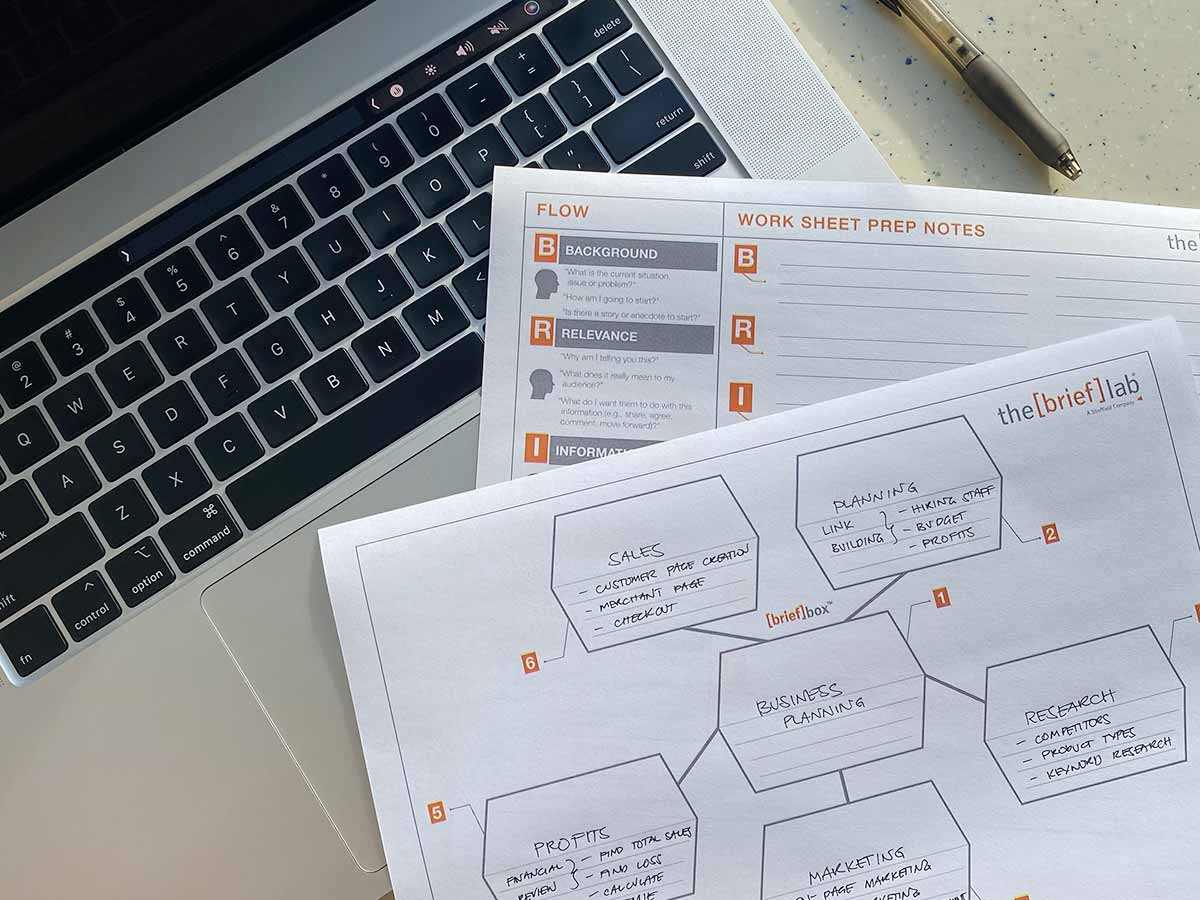5 ways to master a brief business pitch
Author: By Joe McCormack, founder of The Brief Lab and author of “Brief: Make a Bigger Impact by Saying Less,” “Noise: Living and Leading When Nobody Can Focus” and the forthcoming “Quiet Works: Making Silence the Secret Ingredient of the Work Day.”
November 16, 2023

Efficiency in communication is more than a virtue — it's a necessity. When you, as a small business owner, find yourself in front of a potential investor, stakeholder or client, the effectiveness of your pitch isn't just in the content but in the precision and clarity with which you deliver it. Embracing brevity is not about cutting corners; it's about making an impact.
Why is being brief so difficult?
Business owners are knowledgeable and passionate about their businesses and their products. They want people to know that they are experts. However, no one wants you to teach them to be an expert in your field — they want to know how you can help them.
• The expert’s dilemma: When you know something inside and out, not knowing it becomes difficult to imagine. This cognitive bias makes it challenging for experts to step into the shoes of novices. In their pitches, experts sometimes gloss over basics, dive deep into technicalities, or use jargon that’s second nature to them but alien to the uninitiated.
• The risk to overwhelm: Overloading an audience with too much information at once can be counterproductive. Instead of enlightening them, it might create confusion or worse, turn them off entirely. Ever heard the phrase “drinking from a firehose”? It paints a vivid picture of how overwhelming too much information can feel.
While in-depth knowledge is commendable, the ability to condense and tailor that knowledge into a quick pitch for different audiences is equally, if not more, valuable.
5 ways to master the brief business pitch
Being brief in your business communications isn’t about reducing value, it’s about respecting people’s time and attention and making sure your message breaks through the noise. Here are five ways to master a brief business pitch:
1. Less is more
• Simplicity over complexity: By trimming the fat and focusing on the core of your message, you more effectively capture your audience's attention.
• Purposeful content: Every sentence and every word should have a purpose. If it doesn’t add value or drive your main point home, consider cutting it.
2. Tell stories, don’t dump data
• Human connection: Stories appeal to our emotions, making information more memorable. By framing your points within a relatable narrative, you tap into the human instinct for storytelling. Use a resource like our Brief Map to help you get started.
• Visualization: When you share a story, your audience naturally visualizes it, making the information easier to grasp and recall. Plus, stories often simplify complex ideas into digestible, relatable scenarios.
3. Practice, practice, practice
• Refinement through repetition: Each practice session helps you identify weak spots, redundancies or complexities in your quick pitch. Over time, you’ll polish these areas to create a seamless flow.
• Build confidence: Practicing with a business mentor will give extra polish to your short pitch. Getting professional feedback will amplify your confidence, ensuring your delivery is natural and that your message is concise and convincingly presented.
4. Start a conversation
• Active involvement: Questions stimulate thought and keep your customer or prospect engaged. They move from passive listeners to active participants in the discussion.
• Clarify and refine: The answers and feedback you receive can help you tailor your message on the fly, immediately addressing concerns or misconceptions.
5. Use visuals
• Enhanced retention: People remember visual information far better than auditory information alone. When you combine a verbal message with visuals, you increase the chances that your audience will retain the information.
• Clarification and emphasis: Charts, graphs and infographics can often convey in one glance what might take several sentences to explain.
By taking these steps, small business owners can transform their communication skills, ensuring their messages are not just heard, but truly understood and remembered.

Become a Lexmark insider: Exclusive promotions, product launches and tech tips
Get 10% off your next purchase — without the inbox overload
The payoff: Brevity has many benefits
The benefits of being a concise communicator will improve your business pitches and your relationships with your clients and prospects. Here are four ways brevity improves a business pitch:
Builds trust
• Respect for time: Time is a commodity everyone values. By being concise, you show respect for the other person’s time, signaling that you appreciate their attention and don’t intend to waste it.
• Transparency and clarity: A clear and brief message comes across as more genuine and transparent. When you cut to the chase without any obfuscation, your audience is more likely to trust the sincerity of your words.
Boosts engagement
• Reduced cognitive load: Long-winded explanations or extensive details can overwhelm a listener. Concise messages reduce this cognitive load, making it easier for listeners to engage and absorb the information.
• Higher retention rates: Brief, focused messages are easier to remember.
Enhances decision making
• Direct to the point: When pitching or presenting, getting straight to the point helps decision makers quickly understand your proposition. This clarity allows for faster, more informed decision making.
• Reduces ambiguity: Concise messages leave less room for misinterpretation. The clearer you are, the less likely it is for misunderstandings or ambiguities to arise, leading to more decisive actions.
Improves relationships
• Open channels: By being concise, you naturally allow more room for dialogue. Instead of dominating a conversation, you create an environment of give and take, fostering two-way communication.
• Minimized misunderstandings: Misunderstandings can lead to conflict or misalignment in business objectives, while clarity strengthens both professional and personal relationships.
Mastering the art of concise communication not only enhances your professional image but also streamlines interactions, making them more fruitful and productive.
Make a bigger impact by saying less
Embrace brevity, and watch as your business pitches transform from lengthy lectures to concise, captivating communications. Remember, in the world of business, sometimes less truly is more. Now, go out there and make every word count. Cheers to being brief and brilliant.
FAQ
Q: Isn't being brief the same as being superficial?
A: Not at all. Being brief is about prioritizing essential information and clearly delivering it. It's not about skimming the surface but ensuring the core message is understood without unnecessary distractions.
Q: Are visuals always necessary?
A: While visuals can greatly enhance understanding and retention, they're not always mandatory. The key is to use visuals when they clarify or emphasize a point. Avoid using them merely for decoration.
Q: I'm naturally verbose. Can I really learn to be concise?
A: Absolutely. Like any skill, concise communication can be developed with practice and intention. Start by actively editing your communications, seeking feedback and continually refining your approach.
Q: Does brevity apply to written communication like emails?
A: Yes, it does. In fact, in written communications like emails, where the reader's attention span may be even shorter, being concise is crucial. Make your points clear, keep paragraphs short and use bullet points or lists where appropriate to improve readability.
Q: How can I encourage my team to embrace concise communication?
A: Lead by example. Practice brevity in your communications and offer training or resources to help your team develop this skill. Over time, as the benefits become evident, brevity will become a valued practice within your company.
More resources
• Check out HubSpot for 14 elevator pitch examples (plus templates) to inspire your own.
• Take a look at Wordstream’s real-brand pitch examples and on which channels they use them.
• Titan Digital offers tips and examples for a successful 30-second elevator pitch.

Joe McCormack is the founder of The Brief Lab and author of “Brief: Make a Bigger Impact by Saying Less,” “Noise: Living and Leading When Nobody Can Focus” and the upcoming release “Quiet Works: Making Silence the Secret Ingredient of the Work Day.” He has been featured on FastCompany and is the host of the podcast, ‘Just Saying.’ Check out his LinkedIn.
Article from the author:

Which Lexmark printer best suits your small business needs?
Need to print, scan, copy, fax and more?
GO with:
More color printing than black and white?
GO with:
Print mostly text but need all the features?
GO with:
Print more words than images?
GO with:

Recommended small business resources









